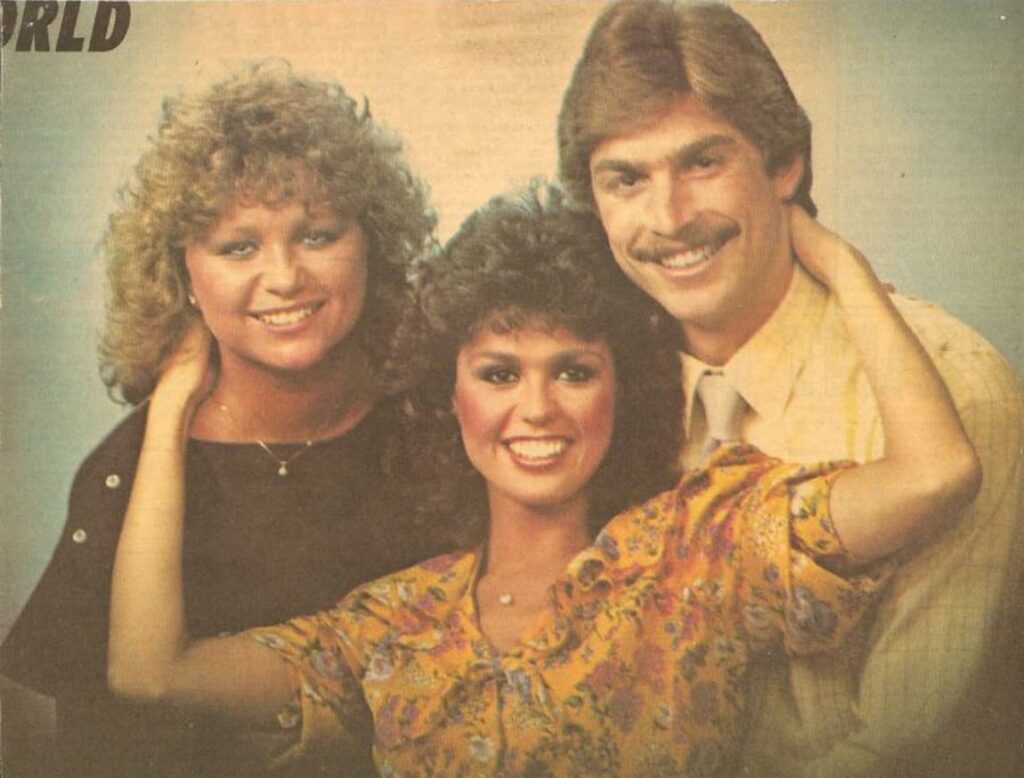
A vibrant tribute to the iconic Andrews Sisters’ wartime classic, capturing the infectious energy of a bygone era.
Ah, “Boogie Woogie Bugle Boy” by the ever-charming Marie Osmond! Just hearing that title conjures up images of a time when swing was king, and the infectious rhythm of boogie-woogie could lift spirits even amidst the most challenging circumstances. Released in 1973, this spirited rendition wasn’t a chart-topper in the same vein as some of her other hits, but it resonated deeply with audiences, particularly those who remembered the original or appreciated its timeless vibrancy. While precise peak chart positions from that era can sometimes be elusive in readily available databases today, it’s fair to say that it carved a respectable niche for itself, showcasing a different facet of young Marie’s talent beyond her more country-pop oriented successes.
The story behind Marie Osmond tackling this beloved classic is one rooted in admiration and a desire to connect with a musical heritage. The original “Boogie Woogie Bugle Boy (of Company B)”, made famous by the incomparable Andrews Sisters in 1941, was an anthem of World War II, a testament to the power of music to unite and uplift. It told the tale of a prodigious trumpet player who traded his civilian band for the bugle calls of army life, bringing his unique musical flair to the military. For Marie, interpreting this song was likely a nod to that era, a way to pay homage to the legendary trio and the spirit of resilience and joy their music embodied. It was a bridge across generations, connecting the youthful energy of the 1970s with the sentimental melodies of the 1940s.
The meaning of “Boogie Woogie Bugle Boy”, both in its original form and in Marie Osmond’s enthusiastic revival, is multifaceted. On the surface, it’s a celebration of musical talent finding its place, even in unexpected circumstances. The bugle boy’s skill transcends the stage, bringing rhythm and life to the military setting. But on a deeper level, especially considering its wartime context, the song speaks to the unifying power of music, its ability to provide solace, boost morale, and create a sense of shared identity during times of hardship. Marie’s rendition, arriving decades later, perhaps carried a sense of nostalgia, a reminder of a time when communities rallied together, and popular music held a particular kind of unifying magic.
While Marie Osmond was carving her own path as a solo artist, known for hits like “Paper Roses”, her decision to record “Boogie Woogie Bugle Boy” showcased her versatility and her appreciation for different musical styles. It was a departure from her more established country and pop sound, demonstrating a willingness to explore the roots of American popular music. This particular song often appeared on her live performances and variety shows, allowing her to showcase her energetic stage presence and her ability to connect with audiences through a familiar and beloved tune. It was a guaranteed crowd-pleaser, a number that would get toes tapping and hands clapping, evoking a sense of carefree joy.
Think back to the early 1970s. The musical landscape was evolving rapidly, with rock and roll, soul, and emerging disco sounds dominating the airwaves. In this context, Marie Osmond’s revisiting of a classic like “Boogie Woogie Bugle Boy” offered a touch of timeless charm, a reminder of the enduring appeal of well-crafted melodies and infectious rhythms. It was a musical bridge, connecting the past with the present, and allowing a new generation to experience the joy and energy of a song that had once lifted the spirits of a nation at war. It stands as a testament to the fact that great music transcends time, and a spirited performance can breathe new life into even the most iconic of songs, reminding us of the enduring power of a good, old-fashioned boogie-woogie beat.